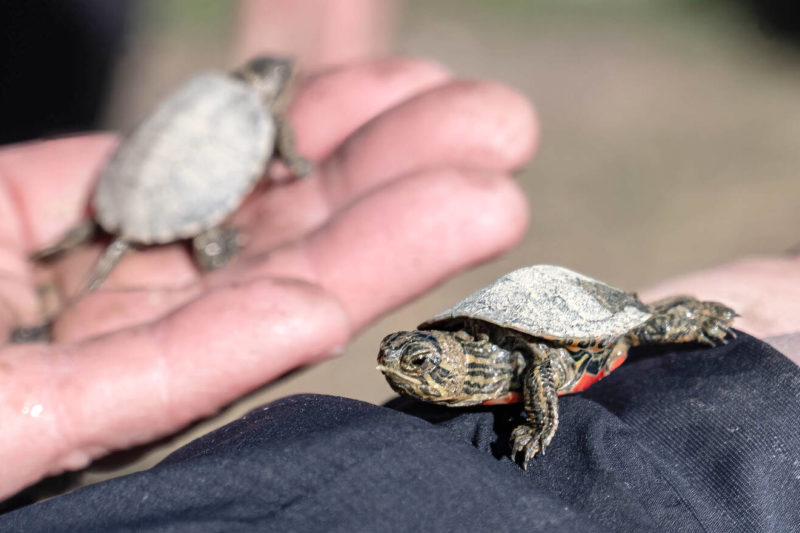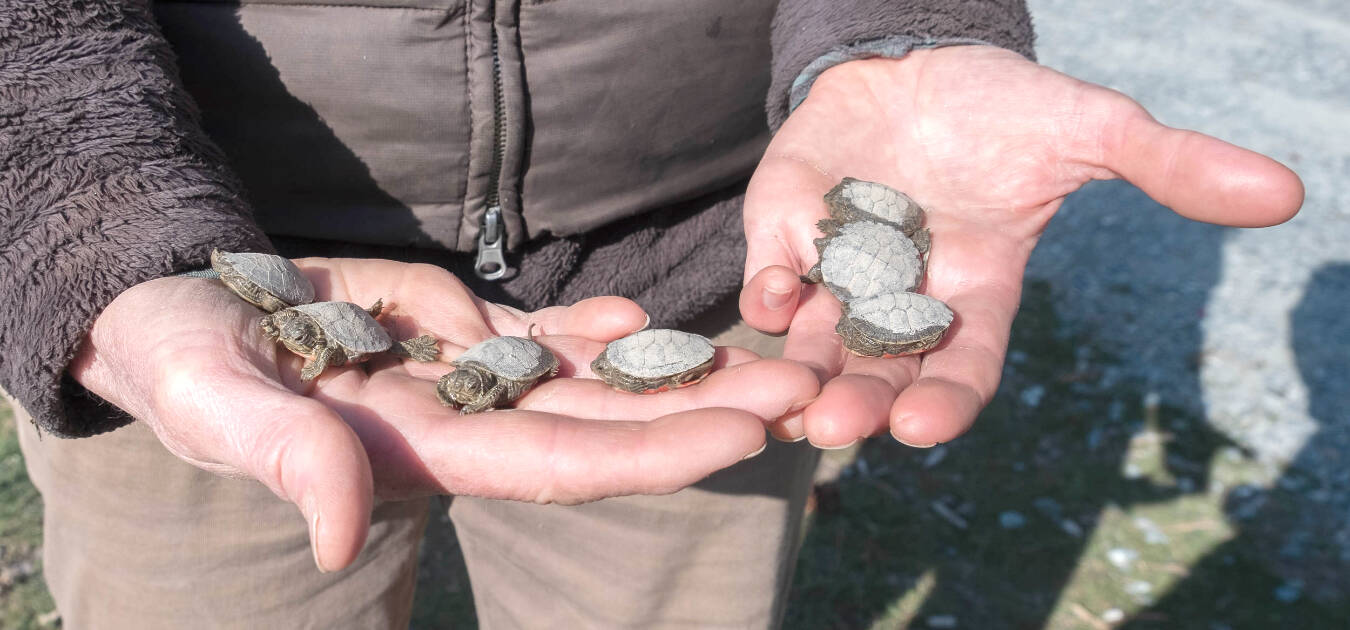By Janice Strong
For Rocky Mountain Naturalists
On Friday, April 29, the Rocky Mountain Naturalists (RMN) held the Annual Turtle Day at Cranbrook’s Elizabeth Lake to celebrate baby turtles.
One hundred Kindergarten to Grade 5 students from three Cranbrook elementary schools attended Turtle Day, learning about Western Painted Turtle lifecycles.
Turtle hatchlings are the stars of the program. Last year, about 1,000 turtles emerged, but the average number is about 500 per year. No data is available on their chances of reaching maturity, but the hatchling program stabilizes Elizabeth Lake’s turtle population.
The turtle program began several years ago to reduce the mortality of female turtles that crossed Highway 3 to lay their eggs. Rocky Mountain Naturalists, in partnership Fish and Wildlife Compensation Program, built fences and constructed nesting habitats beside Elizabeth Lake. The barriers also reduced skunk predation on the nest sites. In addition, the focused location of nesting sites allowed the naturalists and the ministry to monitor nest success and hatch rates.
The Western Painted Turtle (Chrysemys picta) is a BC blue-listed “species of concern” because of predation, traffic fatalities and habitat loss. Baby turtles’ lives are always in danger, as a high percentage succumb to predation by ducks, garter snakes, frogs, and skunks. With survival instincts set on high, newly emerged turtles hide, either in terrestrial shrubbery or by heading to the water, safely concealing themselves amongst the cattails.
During egg-laying season, from late May to early July, turtle monitors use large garden rakes to rake the area daily. When females lumber across the sand, they are heavy with eggs and drag their bellies. This dragging makes a path. RMN members look for those distinctive tracks in the smoothed, raked sand to find the nests. They mark every nest they see and cover only about 30 per cent of them with various cages or steel mesh to keep skunks out.
The eggs stay unattended during the dry and scorching summer. In late August or September, each baby turtle slices open its rubbery eggshell using a specialized egg-tooth. Some emerge then, but most don’t leave the nest yet. Instead, those fully developed baby turtles stay under 10 to 15 centimetres of sand throughout winter’s deep freezes. They emerge from the nest when the weather warms in the spring, from late April to mid May. Finally, baby turtles are ready.
For more information, see the video from last spring:












 Washington hiking guide offers a new way to find accessible trails
Washington hiking guide offers a new way to find accessible trails